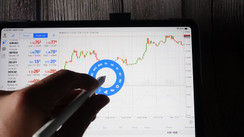An Overview of Balanced Trading
Balanced trading is a trading method that aims to establish equilibrium between the risk and reward. It involves a mix of various asset trades, both on the long and short side, supplemented by stop losses and other risk containment methods. Balanced trading works on the principle of risk dispersal across an array of assets. In other words, it prevents you from putting all your financial eggs in one basket, thereby providing a buffer if a particular asset class underperforms.
Furthermore, balanced trading employs stop losses and various other risk management techniques to keep your losses within your risk appetite, ensuring that your losses don't exceed what you can bear.
Identifying and Attaining Trading Balance
To achieve a balance in trading, a few steps are necessary. Firstly, comprehending your risk tolerance, or the level of risk you're willing to assume with your funds, is crucial.
Once you've gauged your risk tolerance, it's time to pinpoint assets that align with your risk profile. If you're a prudent investor, for instance, you might prefer less volatile assets like bonds.
Alongside asset identification, the implementation of stop losses and other risk management measures is also crucial. These mechanisms help protect your capital and control losses.
Expert Views on Balanced Trading
Numerous industry experts advocate for balanced trading as a solid strategy. Mark Douglas, author of the book "Trading in the Zone," is one such advocate. Douglas opines that balanced trading offers an effective way to handle risk and secure long-term success.
Van Tharp, another expert and author of "Trade Your Way to Financial Freedom," also champions balanced trading as the key to consistent profit realization.
Practical Advice for Balanced Trading
- Follow a Trading Plan: A well-structured plan encourages discipline and mitigates emotion-led decisions.
- Begin with a Demo Account: Practicing strategies in a risk-free environment before using real money is advisable.
- Start Small: Don't attempt large-scale trading immediately. Begin with a modest investment and gradually augment your position as you gather experience.
If you're in pursuit of a trading strategy that can guide you towards long-term success, balanced trading could be an excellent choice. Following the above-mentioned tips can heighten your chances of succeeding.
Conclusion
Balanced trading, with its principles of risk diversification and loss limitation, can be a potent tool for achieving long-term trading success. By shielding your capital and improving your success rate, it provides a viable path to realizing your trading goals.





